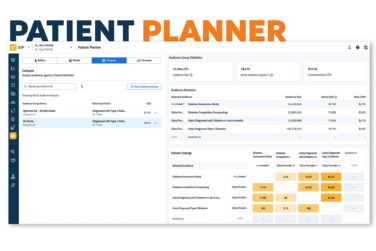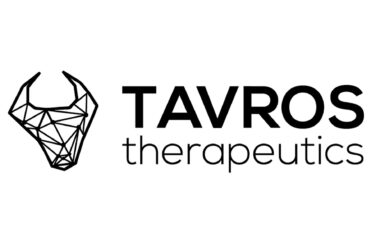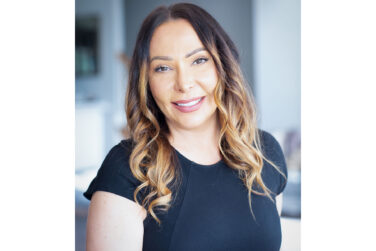In the pharmaceutical industry, the cost of failure can be staggering. According to recent statistics:
- The average cost to bring a drug to market is sitting at $2.3 billion1
- A failed clinical trial can cost anywhere from $800 million to $1.4 billion2
- And medication nonadherence is estimated to add up to $500 billion in avoidable healthcare costs3
Over time, this reality has cemented a culture within pharma characterized by a focus on compliance at the expense of innovation and siloed roles and responsibilities at the expense of collaboration. While compliance and outcomes must receive the utmost priority, the pressure to “get it right” can have adverse consequences. Particularly in pharma marketing.
However, doing what we’ve always done is a proven way to be forgotten in today’s data-driven world of customer experience and expectation. When the pharma industry was mostly focused on selling print advertising in trade magazines, it was common to follow the “set it and forget it” approach to annual media planning. Today, the mantra is “test it, learn from it, and optimize it.” Today, the mantra is Agile.
What is Agile?
Agile methodologies date back to the 1990s and became popular in 2021 with the introduction of the “Agile Manifesto,” initially intended to support software development. At its core, Agile is a collection of tools and delivery frameworks that organizations can use to increase the speed and reliability of results from their work.
But more than that, Agile is a mindset. A way of working. It transforms how groups collaborate, how businesses respond to changing market needs, and how they measure success. Agile is all about learning, following the data, and iterating. It creates a cycle of responsiveness and adaptability that unlocks value in people, strategies, processes, and more.
Agile learners apply takeaways from experiences to improve future performance. They embrace new ideas, seize opportunities, and act even when they don’t have all the information. Part of being an agile learner is being an agile listener. Agile listeners process and think about what they heard, what the data suggests, what they learned, and where they can set the new bar. In listening and learning, they reflect regularly on how to become more effective, and pivot accordingly, which drives deeper customer engagement. Performance is all about taking in what you know now and improving it—even if just a little bit.
In an Agile organization, the workforce operates in a test and learn environment. Moving from “command and control” environments to “test and learn” environments requires trust, psychological safety, and a culture that celebrates failure as a critical component of success.
In pharma, our customers’ expectations are evolving rapidly, as are their preferences for how, when, and where they engage with our health and medical content. This is creating an imperative to accelerate our processes to create new content and experiment with new channels to meet our customers where they are, in the way they need us, when they need us.
According to a 2023 study 4 conducted by the Digital Health Coalition in partnership with Healio, we have room for improvement in terms of how well we engage our customers. Only 5% of physicians surveyed agreed with the statements “Pharma companies do a good job of delivering relevant content that I need as a physician” and “Pharma companies currently communicate with me in a relevant and personalized manner.” Only 3% agreed that “Pharma companies really understand me as a physician.”
By embracing an Agile Marketing approach, we’ve seen commercial organizations achieve up to 8x lift in customer engagement and up to 75% decreased time to market for campaigns.5 The benefits are real—but so is the fear of failure.
So, how do we move forward with Agile practices to embed a culture that accelerates innovation and celebrates failure?
Step 1: Secure Your Sponsor
Being Agile isn’t something that can be done in a vacuum. In the most recent “State of Agile” report,6 the top two reasons cited for unsuccessful Agile implementation are 1) culture and 2) lack of management support.
Executive sponsorship is crucial for driving adoption of Agile practices as it not only provides the necessary resources and authority but also instills a sense of psychological safety among teams. When leaders champion innovative initiatives, it encourages employees to take risks, embrace failure and learn from them, and fosters a culture of experimentation and adaptability.
To get the support you need, build your business case and tie it to your organization’s brand, customer experience (CX), or omnichannel strategy using metrics related to campaign time to market, customer engagement, or the opportunity cost of delayed content approvals. Identify the gaps that need to be filled—with a dollar figure attached—to illustrate the business value of change.
Step 2: Identify Your Change Agents
Once you’ve secured your executive sponsorship, begin to build a network of passionate stakeholders who can champion innovation and effectively communicate how agile, test and learn practices can deliver deeper customer understanding and drive enhanced engagement by accelerating time to market and aligning tactics to customer preferences. Don’t limit your change network to your marketers; engage your Insights & Analytics team, your Omnichannel Center of Excellence (CoE) leads, and/or your brand leads to establish psychological safety and shared purpose throughout the working group.
These change agents act as internal catalysts for transformation, inspiring others to embrace ideas, leading to enhanced creativity, problem-solving, and collaboration.
Step 3: Pick Your Pilot
Starting small with one pilot or a limited-scale test allows for controlled experimentation in a low-risk environment, perfect for rapidly gathering valuable insights with minimal resources and fine-tuning strategies that can be applied to refine the approach over time. This incremental approach enables the “fail-fast” mentality, learning quickly, and enabling flexibility to pivot the approach based on lessons learned.
“Part of doing and embracing Agile is failing fast, failing early, and then focusing on something else, as opposed to figuring out months later that it wasn’t working,” says Tres Garcia, Director of Marketing, Agile Chapter Lead, Merck.7
When selecting your pilot, start by identifying one data point in your campaign that you’d like to improve. Then create a series of hypotheses for what might be impacting that result and select one hypothesis to test. Might there be a different way to segment and view your data to better align your content to the customer? Is there one area where non-personal promotion (NPP) and field touchpoints might be better orchestrated? What would that look like? What could we test to better understand how our campaigns are performing so that we can get closer to an optimal result?
The key to picking your pilot is in the questions you’d like to have answered, not the ultimate outcome you’d like to achieve. The learnings from the pilot(s) build the roadmap to the outcome.
Pick something that can be easily measured with available data sources, with an established baseline, where impact (or lack thereof) can be seen within two weeks to two months. Timebox the pilot to force yourself into a cadence of test, learn, optimize, test, learn, optimize.
Step 4: Measure What Matters
Create your measurement framework rooted in what you aim to learn from your pilot, rather than focusing solely on desired engagement metrics. This ensures that the downstream evaluation process is aligned to metrics of success that include a wide range of outcomes.
Focusing on the learning itself as an outcome is essential to creating a culture that sees “failure” as the path to progress. If you learn from every pilot, there is no failure. Only progress.
“One of my favorite sayings is ‘think big, start small, and scale quickly.’ The way we find success is having a small pilot, optimizing at every single step of the way, and—most importantly—when we’re done with that engagement, we always measure the results, but we also come up with a playbook so that we can learn from all of the mistakes and all of the victories as well,” says Ray Gomez, Vice President, Worldwide Omnichannel Capabilities, Bristol Myers Squibb.7
Step 5: Communicate and Celebrate Learnings
With each pilot, communicate widely and often what was achieved and what you learned through the process—and how those learnings will be applied in your next iteration of testing or scaled up and operationalized in the future. If you notice decreased time on site or lower high-valued actions from your test, as examples, communicate how this learning will inform future campaigns by eliminating those variables. If your test resulted in a positive engagement boost, share how you plan to scale your minimum viable product (MVP) to other scenarios, campaigns, or brands.
Be sure to bring your executive sponsor and change agents back in to help you tell and repeat this story.
Celebrating lessons learned not only acknowledges achievements but also fosters a culture of transparency and collaboration. By proactively framing insights as wins, teams can move past their fear of failure and leverage their collective experiences to refine the approach for the next iteration and drive improved outcomes.
Becoming an Agile organization that embraces experimentation and celebrates the process of learning is a journey. It takes time—plus resilience, collaboration, and commitment to keeping people at the center of the process. But, by following this roadmap to establish strong executive sponsorship, building a passionate community of change makers, starting small and learning quickly, the benefits of adopting Agile can be transformational.
References:
3. https://pubmed.ncbi.nlm.nih.gov/29577766.
5. Internal North Highland data.









